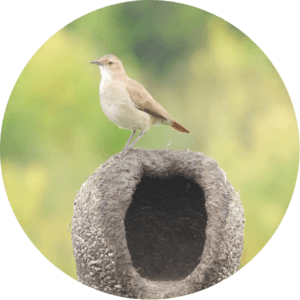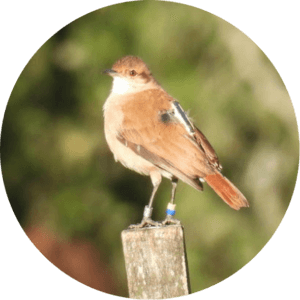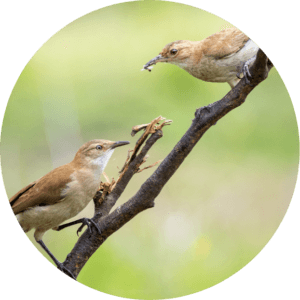
Projects

People participating in this project: Nicolás Adreani, Lucía Mentesana, Paulo Llambías, Lucía de Abrantes.
This citizen science project aims, on one hand, to understand the large-scale environmental factors that determine the start of the ovenbird nest construction and its duration. On the other hand, this project seeks to quantify how citizen science impacts the citizen scientists who participate. This project also represents a commitment to the dissemination of scientific knowledge with the idea of bringing science closer to society. To achieve this, we have developed a mobile application so that anyone can collect data on ovenbird nest construction wherever they are found! Don't miss out, download it and participate!
Nest Building
People participating in this project: Nicolás Adreani, Iain Couzin, Lucía Mentesana & Bettina Tassino.
This project, supported by the Max Planck Institute of Animal Behavior, aims to understand the nest-building behavior in ovenbirds and the role of cooperation in this task. We employ approaches of 3D posture estimation and reconstruction and high-definition photogrammetry in combination with artificial intelligence to obtain high-resolution quantitative information about nest construction. This allows us to address scientific questions both from classical ethology with a high degree of precision, as well as from mathematical modeling, bringing us closer to understanding, for example, the underlying mechanisms of cooperation during the building behavior.


Territoriality
People participating in this project: Lucía Mentesana, Nicolás Adreani & Bettina Tassino.
En este proyecto nos proponemos estudiar cómo se mueven los horneros a lo largo del año, qué factores explican esos comportamientos, y su relación con el éxito reproductivo. Para eso, en una población salvaje de horneros, equipamos individuos con GPSs que registran su posición geográfica.
Physiology
People participating in this project: Noelle Rivas Ortiz, Nicolás Adreani, Lucía Mentesana & Bettina Tassino.
With this project, we aim to understand how horneros handle the trade-off between aggression and care, how these behaviors are modulated by testosterone, and how these tasks and testosterone impact their reproductive success. Additionally, since in horneros both females and males are aggressive and care for their chicks, we seek to understand whether the mechanisms behind these behaviors are the same (or not) for both sexes.



